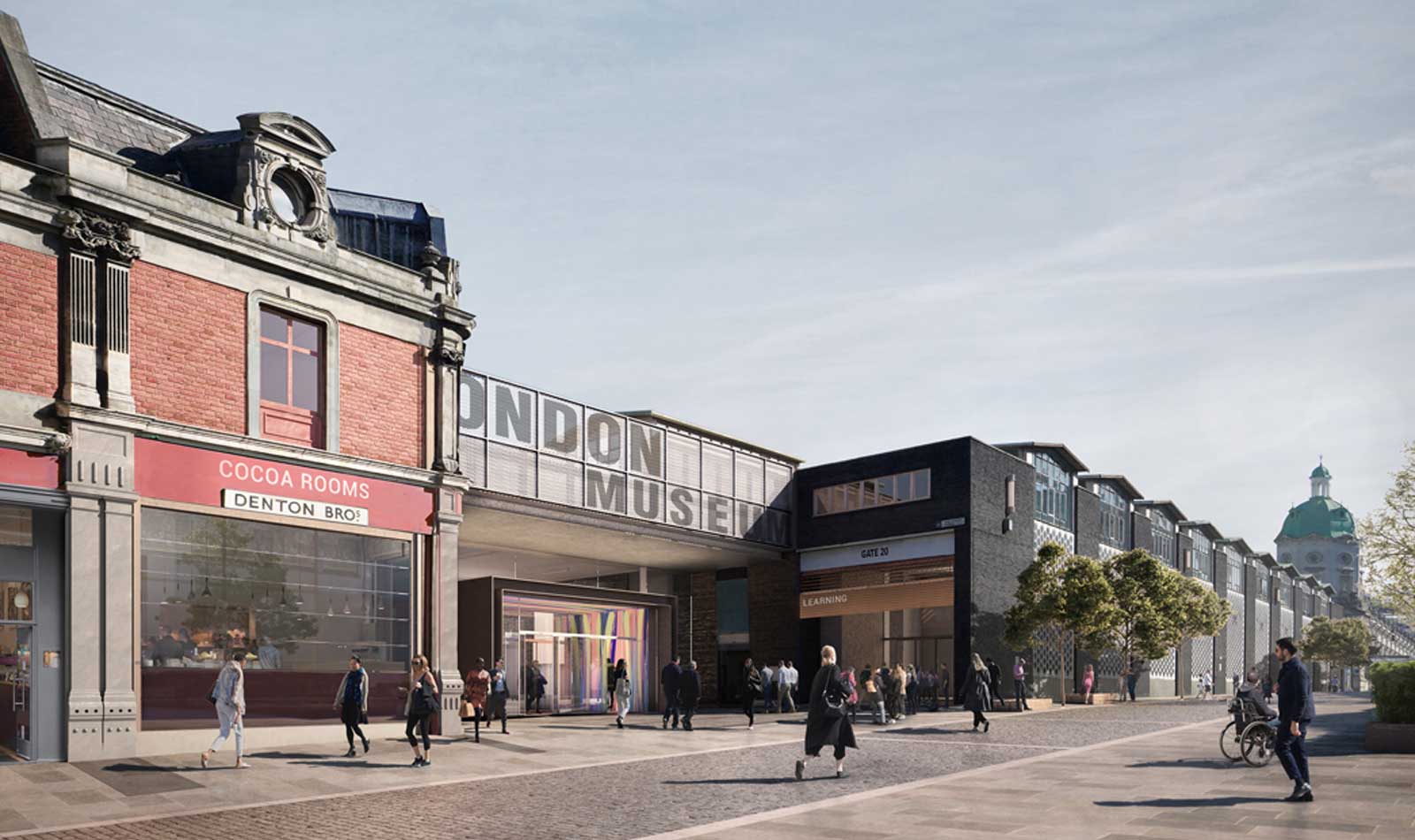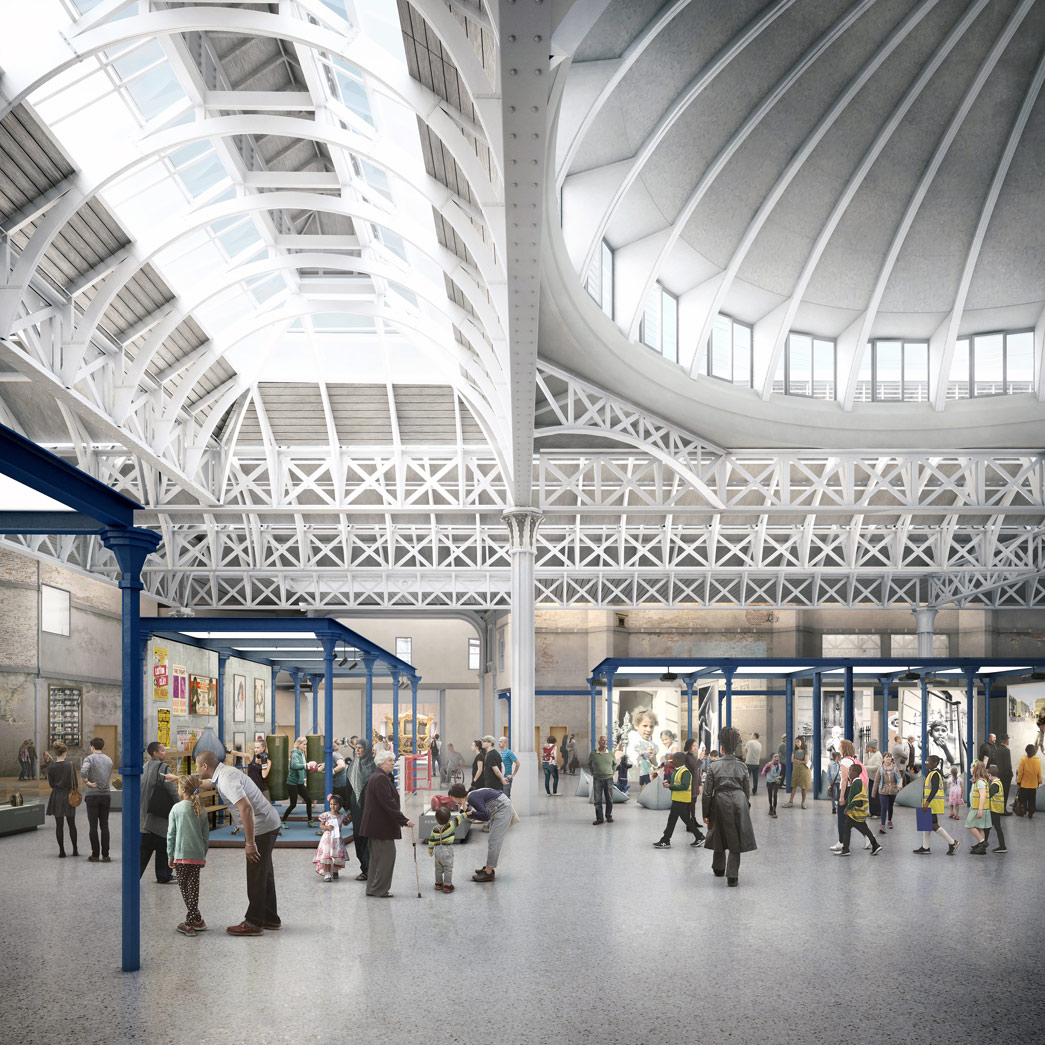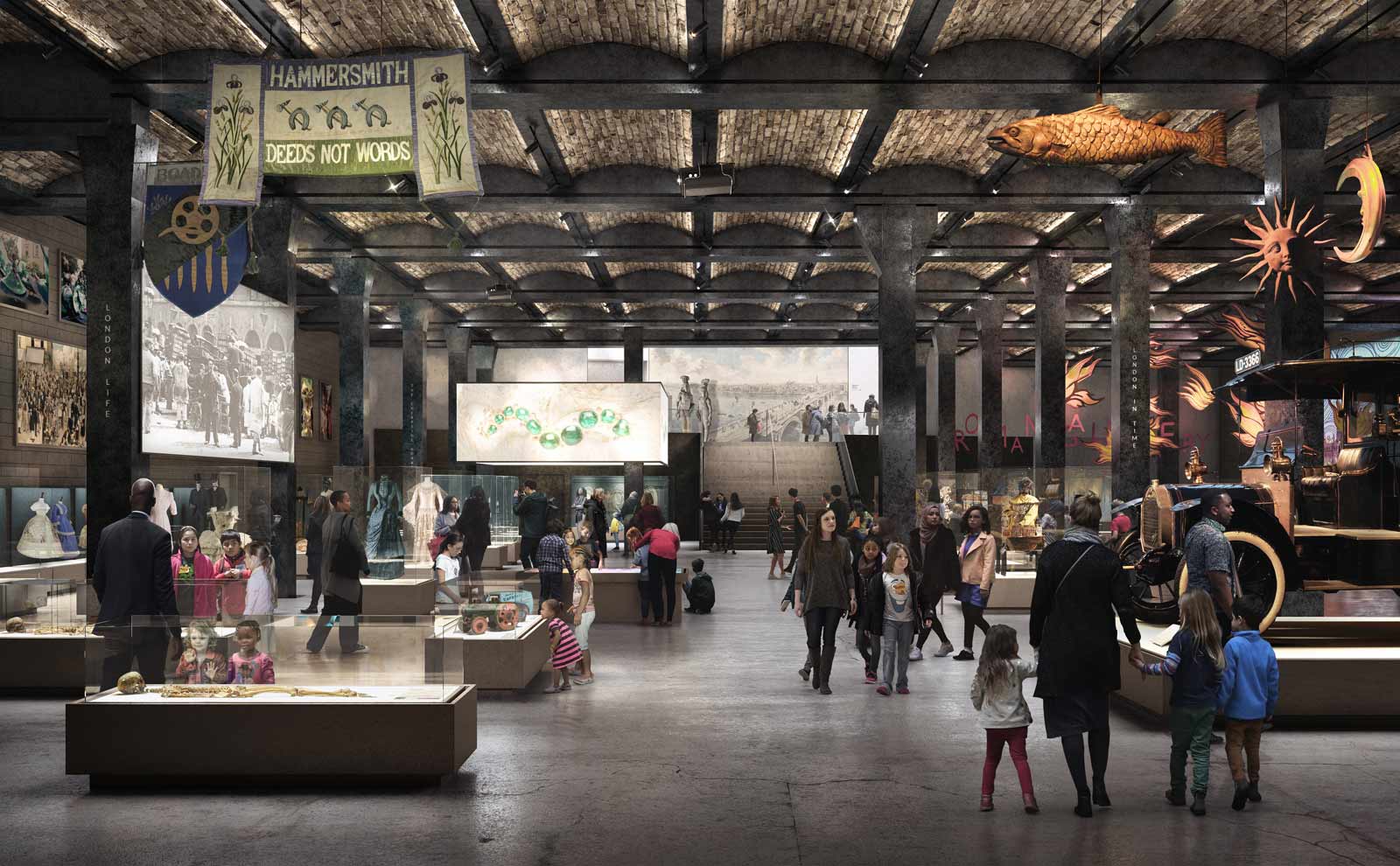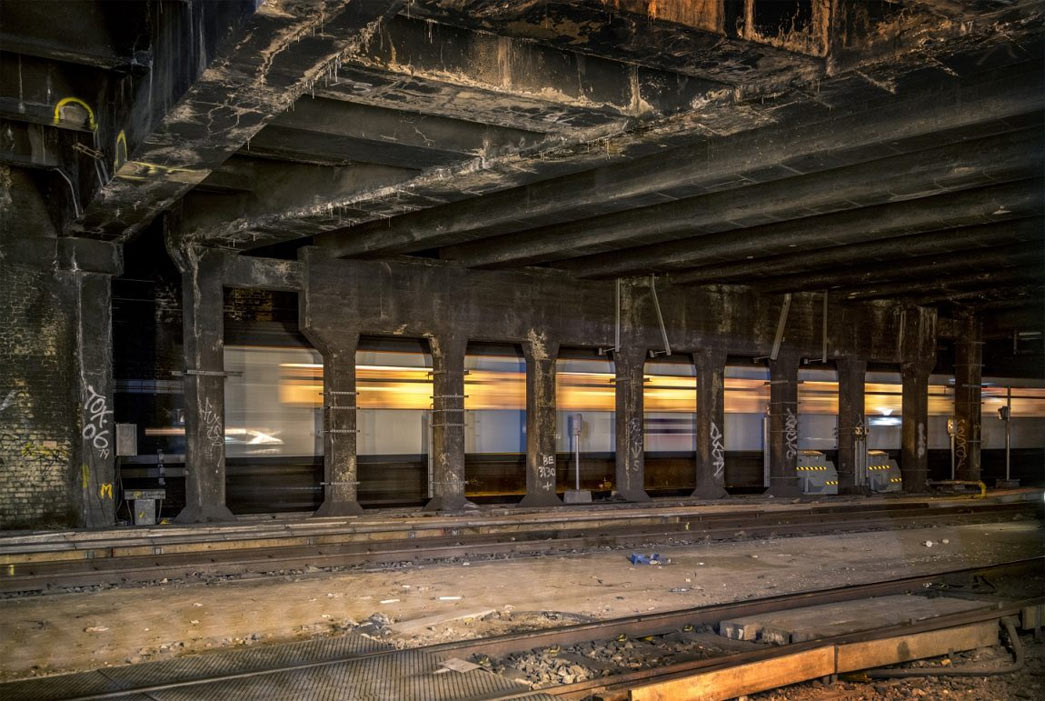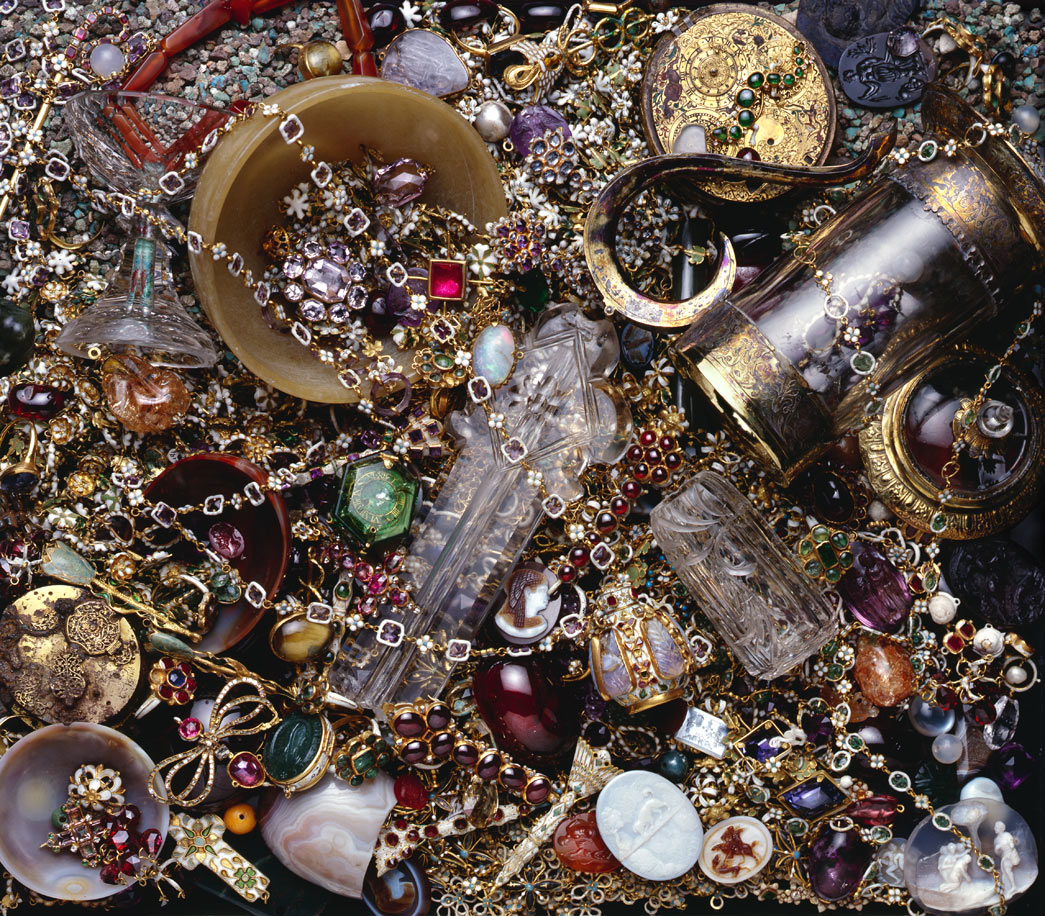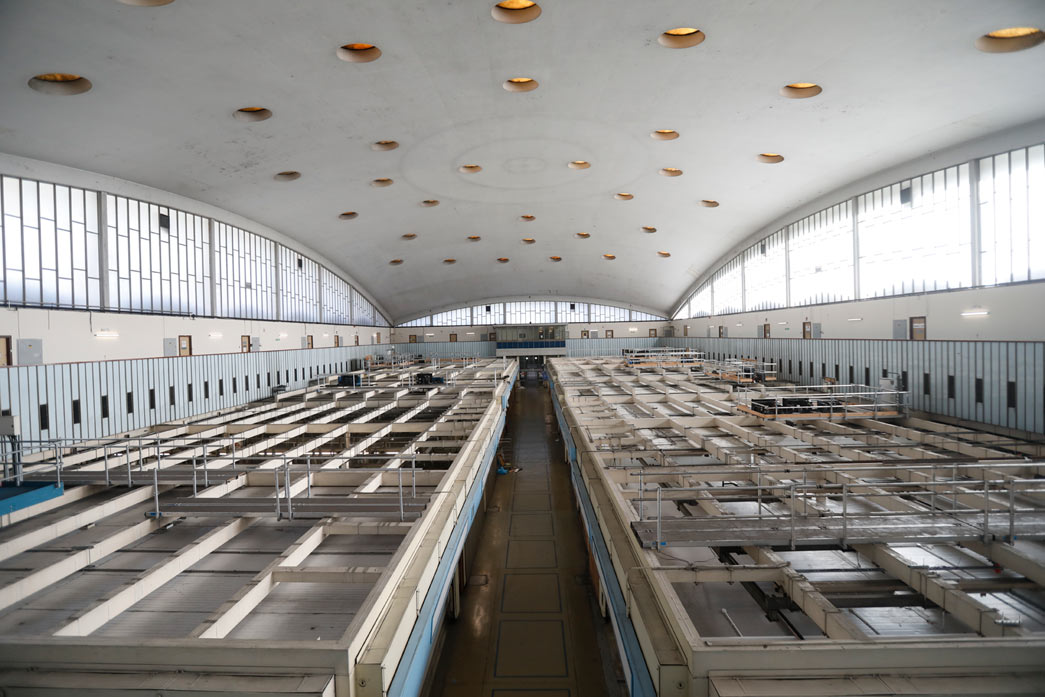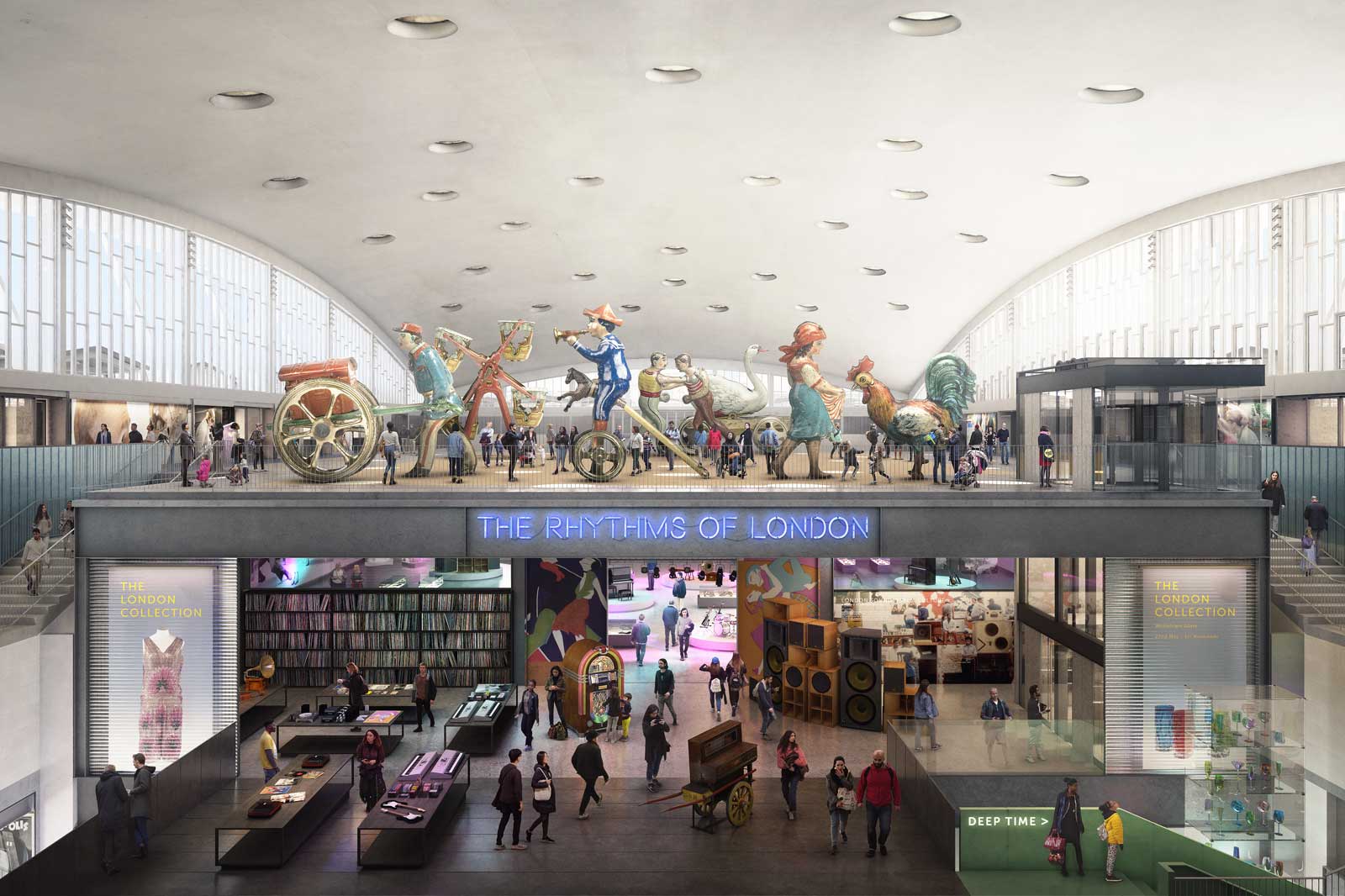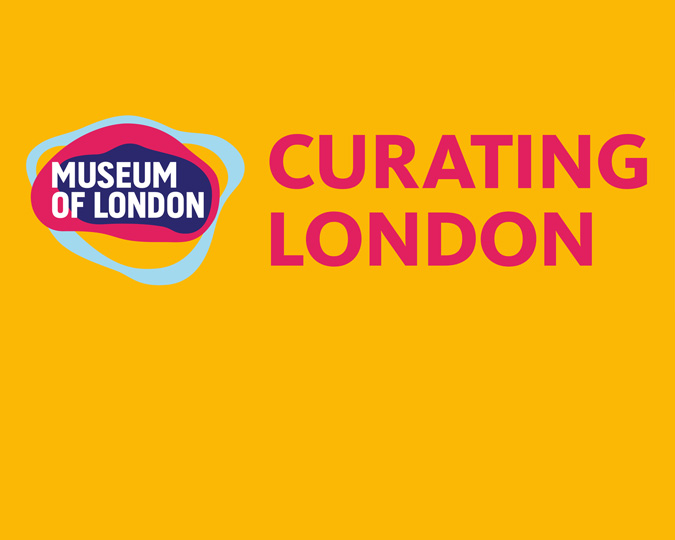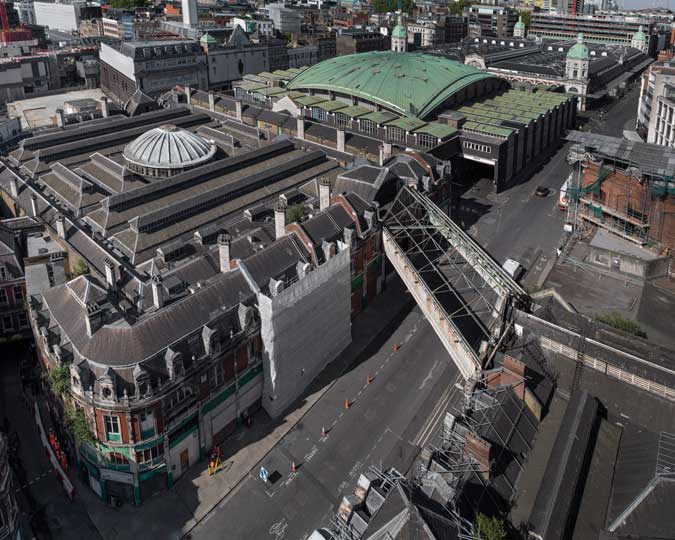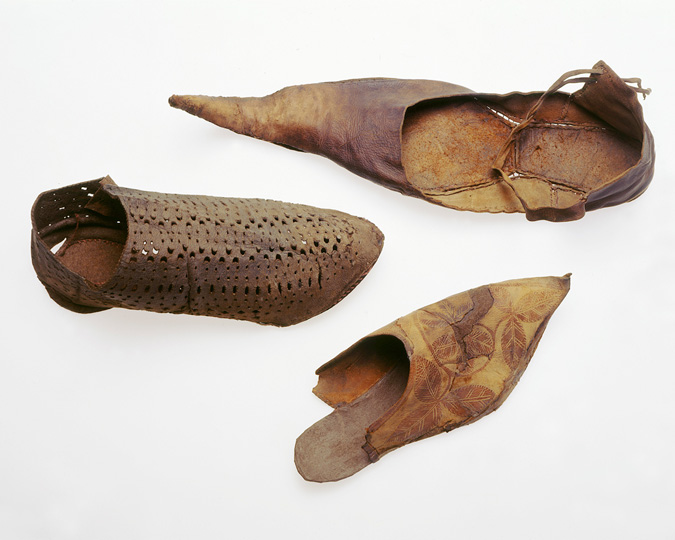The Museum of London is on the move. Since 2015, we’ve been planning a move to a new site in West Smithfield. The new Museum of London will bring our world-class London collection to the glorious, but largely dilapidated market in Smithfield. Let Lead Curator Alex Werner take you on a tour of the new museum, starting with…
Real Time
This is currently West Poultry Avenue, the road between the General Market and Poultry Market buildings. It’s the museum’s main entrance, but it’s also a street: we want to keep that feeling. Yes, you’ve entered the museum, but you haven’t left London. This space is called Real Time, exploring the city outside our walls, on the day that you visit the museum.
Maybe we’ll draw in big data and display it here so you know where you are in the firmament of London. It will give our visitors a chance to get their bearings and make a choice: turn left into the General Market, or right into the Poultry Market.
The General Market ground floor: this is Our Time
The General Market is a spectacular building designed by prolific architect Sir Horace Jones. Inside, beneath the impressive dome, you’ll find Our Time, the space that explores London within living memory. Our displays and programming here will feature key moments from the recent past and the personal experiences of Londoners.
Every living Londoner has a particular viewpoint of their own life, their joy, their grief, their successes and their challenges. Our Time is a sharing space, where you will hear different experiences, different opinions, and maybe share your own back into the museum.
I’d say that this is the heart of the new museum- it’s a really exciting space, a friendly space, built in late 19th century so it has the feel of a magnificent late Victorian market, but filled with things from modern London. There will be exhibits here and they will change regularly offering unexpected people-focused perspectives on one of the world’s most diverse and creative cities. There’ll be all the things that you usually find in museums, the shop, the restaurant, the toilets. But in our new museum, we will embrace ‘360° curation’.
Most other museums have the galleries over here, the café
over there- in the new museum of London, you’ll find the collection everywhere.
You might be on your way to the loo and find yourself with a tiny part of the
London story- maybe a medieval toilet (not to use obviously). We want Londoners
to discover their favourite object anywhere and everywhere, starting with our permanent
galleries of Past Time, located beneath.
Past Time
The buildings that we will be inhabiting in West Smithfield have cavernous underground spaces- the basement under the General Market was part of the enormous Great Northern Railway’s Farringdon goods depot.
Our subterranean Past Time galleries will present the history of London in a new way. In our current site, the galleries start in prehistory and follow a set route- nobody deviates unless you’re desperate for the loo. You don’t get to choose your own path through London’s story. We want to offer people more options, make sure there’s always something new to discover, no matter how often you come back.
For visitors under time pressure, tourists perhaps who don’t have long to spend in the new museum, we’ll lead with an overview of London’s long and complex history featuring some of the stars of our collection. These key objects are scattered across our current galleries. In our new museum we’ll pull them together so nobody misses out.
As you move deeper into our Past Time galleries, you get to
choose again how you explore the history of London. More of the physical city,
or more about Londoner’s lives?
Physical city is about what makes London special: its extraordinary architecture, ecosystem and built environment. This is also where you’ll have the opportunity to see one of the highlights, the Thameslink trains passing through the museum. We’ll explore the networks that keep the city alive, and how they’ve evolved over two thousand years: from transport to sewage.
London life is about what it’s like to live in the city across the centuries. Here we will depart from strict chronology, taking in all of the city’s history: so you can compare what it was like to live in Roman Londinium to what life was like for a Victorian Londoner.
Other galleries will focus on some of the key moments in London’s story, from the Romans to the Great Fire of London. One of the most spectacular collection of objects is the Cheapside Hoard, a unique collection of Elizabethan and Stuart jewellery. Thanks to a pledge of £10m from the Worshipful Company of Goldsmiths and its affiliated charity, now a Founding Partner, the hoard will go on permanent display in a gallery bearing the Goldsmiths’ name. This will be at the heart of the new museum, showcasing the Cheapside Hoard together with highlights from the Company’s world-renowned collection of historic and contemporary silver.
But there are over a 7 million objects in the London collection, so not every one can be on display in Past Time. To see more, you’ll have to come back up to street level and walk across to the Poultry Market building. Are you ready to travel into…
Deep Time
The Museum of London has an unparalleled collection. Is there another city museum anywhere in the world that stretches from prehistory to the present, which reflects a global empire and a modern metropolis? Here we will inhabit the enormous former cold store under the Poultry Market building. This is Deep Time.
That’s where we’re going to store quite a lot of the museum’s collection, and we’re putting aside a large public area to convey its unparalleled depth and range. We want to let Londoners who visit the museum see into the store- it’s their collection, not ours. We also want the excitement of finding something in our store to be conveyed in the displays. Researchers, school groups and interested Londoners will be able to study their choice of objects, right in the heart of the museum.
Above the Deep Time store, the ground floor of the Poultry Market will feature two large spaces for temporary exhibitions. We will always have a major exhibition for our visitors- we won’t have to take time to break down and rebuild our exhibitions as we have to at the moment. These will be some of the largest temporary exhibition spaces in London. But there’s one last space to explore in our new museum. To see it, you’ll have to travel up, into…
Imagined time: step into the London story
We’re not going to waste space in the new museum. Up high, just beneath the gorgeous sweeping roof, you’ll discover a fourth space, a playground for the mind. This is Imagined London- part future, part fantasy.
Imagined London is where we’ll imagine what London might look like in years to come, project the changes that new technology will bring. But it’s also about the way that London has been imagined. This is where we’ll explore the London created by filmmakers, writers, and artists through the years. In the past we’ve explored fictional characters from Sherlock Holmes to Paddington Bear, and the new museum will go further, letting our imaginations run riot.
The museum’s staff offices and conservation laboratories will also be around the outside of this space, alongside our research areas, so that we can let the public get a better idea of how the living museum operates.
A new Museum for a new London
The Museum of London won’t be contained within the walls of West Smithfield. In the summer, the outside space will be hugely important, featuring performances and festivals, and who knows what else. We will be at the heart of Culture Mile: a new cultural quarter in the City of London.








